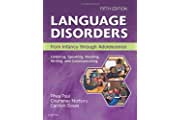Expressive Language Disorder
Expressive language disorder is difficulty using words to communicate needs and ideas. Children who have this disorder may leave words out of sentences, mix up word tense, and repeat phrases or parts of sentences. It can lead to problems in social settings and at school.
Cluster Number:
Wiki Number: W080
Diagnosis: Expressive Language Disorder
US Patients:
World Patients:
Sex Ratio: B+;G
Age Onset:
Brain Area: Inadequate procedural memories in basal-ganglia circuits in the frontal lobe; Broca’s and Wernicke’s areas, also
Symptoms: lower than normal spoken language expression, but normal language understanding: vocabulary, complex sentences etc.
Progression:
Causes: “acquired expressive language disorder” – brain damage, by stroke, injury or seizures; FOXP2-gene=speech impairments
Medications: None listed. The Wikipedia article includes a section describing areas of the brain which may affect this disorder.
Therapies: speech therapy
Youtube Video: Receptive and Expressive Language
Click the book to link or order from Amazon.

